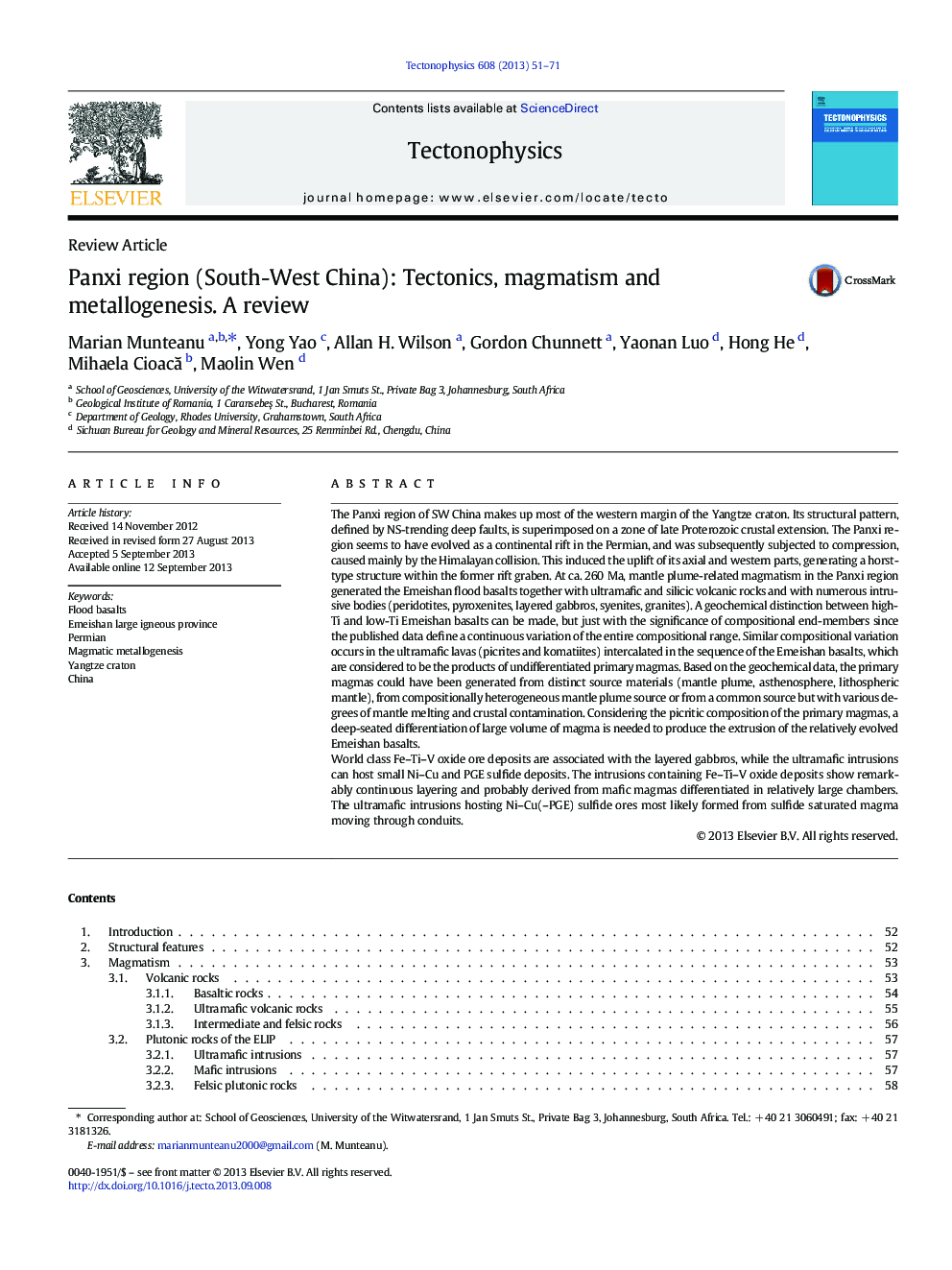| کد مقاله | کد نشریه | سال انتشار | مقاله انگلیسی | نسخه تمام متن |
|---|---|---|---|---|
| 6433922 | 1636779 | 2013 | 21 صفحه PDF | دانلود رایگان |

- Inherited tectonic patterns (late Proterozoic-Permian-present)
- Permian mantle plume and continental rift associated with the Emeishan magmatism
- Submerged flood basalt eruptions
- Picritic primary magmas and basaltic parental magmas
The Panxi region of SW China makes up most of the western margin of the Yangtze craton. Its structural pattern, defined by NS-trending deep faults, is superimposed on a zone of late Proterozoic crustal extension. The Panxi region seems to have evolved as a continental rift in the Permian, and was subsequently subjected to compression, caused mainly by the Himalayan collision. This induced the uplift of its axial and western parts, generating a horst-type structure within the former rift graben. At ca. 260Â Ma, mantle plume-related magmatism in the Panxi region generated the Emeishan flood basalts together with ultramafic and silicic volcanic rocks and with numerous intrusive bodies (peridotites, pyroxenites, layered gabbros, syenites, granites). A geochemical distinction between high-Ti and low-Ti Emeishan basalts can be made, but just with the significance of compositional end-members since the published data define a continuous variation of the entire compositional range. Similar compositional variation occurs in the ultramafic lavas (picrites and komatiites) intercalated in the sequence of the Emeishan basalts, which are considered to be the products of undifferentiated primary magmas. Based on the geochemical data, the primary magmas could have been generated from distinct source materials (mantle plume, asthenosphere, lithospheric mantle), from compositionally heterogeneous mantle plume source or from a common source but with various degrees of mantle melting and crustal contamination. Considering the picritic composition of the primary magmas, a deep-seated differentiation of large volume of magma is needed to produce the extrusion of the relatively evolved Emeishan basalts.World class Fe-Ti-V oxide ore deposits are associated with the layered gabbros, while the ultramafic intrusions can host small Ni-Cu and PGE sulfide deposits. The intrusions containing Fe-Ti-V oxide deposits show remarkably continuous layering and probably derived from mafic magmas differentiated in relatively large chambers. The ultramafic intrusions hosting Ni-Cu(-PGE) sulfide ores most likely formed from sulfide saturated magma moving through conduits.
Journal: Tectonophysics - Volume 608, 26 November 2013, Pages 51-71